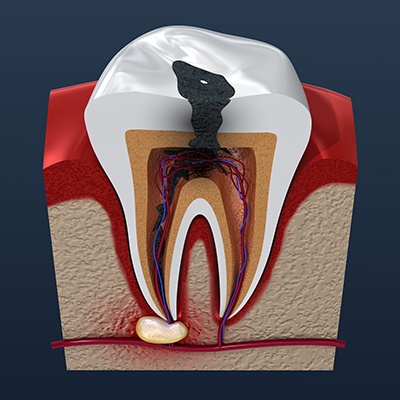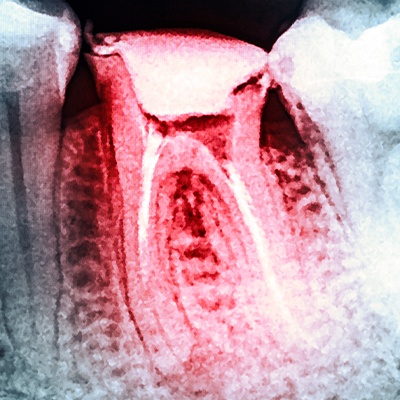
Root Canal Therapy – Reynoldsburg, OH
Save Your Tooth
and Your Smile
While some dental issues can be hard to evaluate on your own, tooth pain is something that you should never experience. It’s also one of the clearest signs that an infection has developed inside your mouth and needs professional intervention. While many people avoid root canal therapy out of fear of discomfort, the reality is Dr. Mick and his team can assure you that your root canal therapy feels more akin to receiving a dental filling, which is hardly a difficult or uncomfortable treatment. In fact, stopping your severe dental discomfort is best done through root canal therapy. To schedule an appointment and address your tooth pain once and for all, call us!

Why Choose Mick Family Dental Care for Root Canal Therapy?
- Long-Term Dental Professionals Serving Your Needs
- Stay Calm with Sedation Dentistry
- Caring Dentist That Cares About Your Comfort
What is a Root Canal?

A root canal is a very common dental procedure performed by dentists and dental specialists alike. It involves creating a small access hole in the crown portion of the tooth, removing decayed pulp (nerve) tissue inside the inner area of the tooth, shaping and irrigating the canal, and placing an inert root canal filling material known as gutta percha. Finally, a crown is placed on top to cover the hole that was created to reach the tooth’s pulp.
Why is a Root Canal Necessary?

Root canal therapy is needed when an oral infection has developed in the center of the tooth. Infections develop when dental plaque or bacteria reaches the sensitive center of the tooth where pulp tissue lies. Without treatment, not only can the dental discomfort become unbearable, but your neighboring teeth can be put at risk of developing an infection as well.
How Do Cavities Start?

Cavities often develop when dental plaque and tartar are not regularly removed. Plaque is easily removed via regular at-home brushing and flossing. Tartar, its more calcified form, can only be removed by a trained professional like Dr. Mick. Without routine care, plaque caused by oral bacteria can breach the many layers of enamel and access the sensitive pulp tissue.
Signs You Need a Root Canal

Generally, severe dental discomfort is the most common and obvious sign that a root canal will be needed. However, you may also notice pimple-like bumps forming on the gum tissue near the tooth experiencing the infection. The tooth can also begin to appear dark yellow, gray, brown or black, which is a sign that the tooth is dead or dying. A fever can also develop, which is common for infections anywhere in the body, not just the mouth.
Cost for Root Canal Treatment

Depending on the severity of your oral infection, the cost of your root canal therapy can vary. You’ll need to keep in mind that treatment occurs in phases. This includes the actual cleaning and shaping of the canal as well as the restorative phase of covering the tooth with a dental crown. The tooth in need of care can also influence cost. For example, molars tend to cost more to treat than other teeth. Regardless of the cost, the last thing you should do is assume your infection will get better on its own. Our office is happy to accept many dental insurance plans, offer third-party financing, and work with you to build a payment plan that’s within your means.